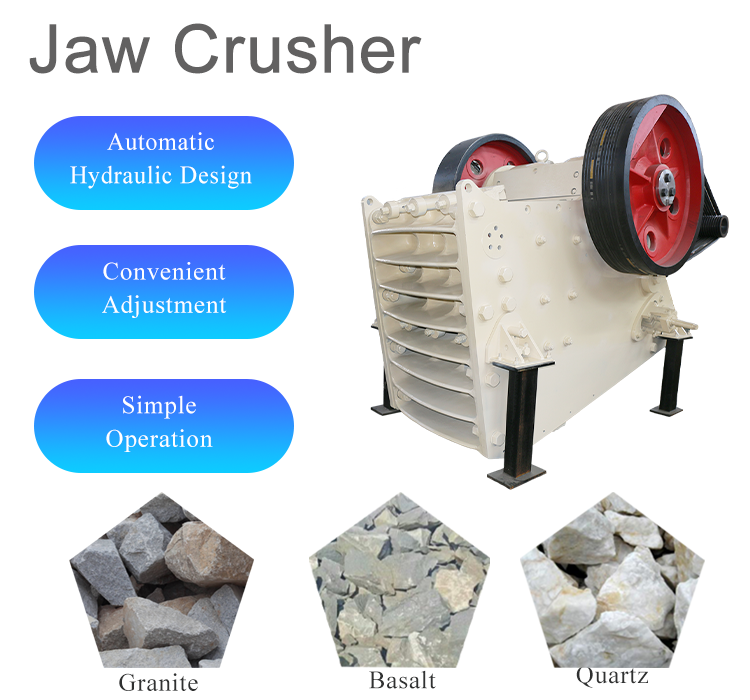Jaw crushers are one of the most commonly used pieces of equipment in the mining and construction industries, primarily for the purpose of crushing large rocks into smaller, more manageable pieces. Their design and functionality are pivotal to the efficiency of many operations, making it essential to understand how they work.

The Basic Structure of a Jaw Crusher
A jaw crusher consists of two main components: the fixed jaw and the movable jaw. The fixed jaw is anchored in place, while the movable jaw is hinged at the top and can move in a downward and upward motion. This arrangement creates a V-shaped cavity known as the crushing chamber, where the crushing action takes place. The space between the jaws is adjustable, allowing operators to control the size of the output material.
The Crushing Mechanism
The operation of a jaw crusher is relatively straightforward. When material to be crushed is fed into the crushing chamber, the movable jaw begins to move downward. This motion is typically powered by an electric motor that drives a pulley system. As the movable jaw descends, it compresses the material against the fixed jaw, breaking it apart. The size of the crushed material is determined by the gap between the two jaws and can be adjusted according to the requirements of the operation.
The crushing action is a combination of compression and shear forces. The material is subjected to high pressure as it is squeezed between the two jaws. The design of the jaw plates — often made of high manganese steel — ensures durability and longevity, as they withstand the abrasive nature of the materials being crushed.
The Jaw Crusher Cycle
The crushing cycle of a jaw crusher can be divided into four main phases:
Feeding Phase:
The material is introduced into the crushing chamber. This can be done manually or through a conveyor belt system.
Crushing Phase:
As the movable jaw moves downward, it exerts pressure on the material, causing it to fracture. The crushed material is then displaced downward and out of the crushing chamber.
Discharge Phase:
Once the material is crushed to the desired size, it is discharged from the bottom of the jaw crusher. The size of the discharge opening can be adjusted to control the output size of the crushed material.
Return Phase:
After the crushing phase, the movable jaw returns to its original position, ready to crush another batch of material. This cycle repeats continuously as long as the machine is operational.
Applications and Benefits
Jaw crushers are versatile machines that can be used in various applications, including mining, recycling, and construction. They are particularly effective for primary crushing, where large pieces of material need to be broken down before further processing. Their ability to handle a wide range of materials—from granite to concrete—makes them indispensable in many industries.
One of the significant benefits of jaw crushers is their simplicity and ease of operation. They require minimal maintenance and can be easily adjusted to accommodate different material sizes. Additionally, their robust design ensures a long service life, making them a cost-effective choice for many operations.
Conclusion
In summary, jaw crushers are essential machines in the mining and construction industries, playing a crucial role in the material processing chain. Their design, characterized by a fixed and movable jaw, allows for efficient crushing through a combination of compression and shear forces. Understanding how a jaw crusher works not only highlights its importance but also underscores the need for proper maintenance and operation to maximize efficiency and longevity. As industries continue to evolve, the jaw crusher remains a fundamental tool in the quest for efficient material processing.
